28 – Letter to Fred Bullock from Frederick Smith, 28 Mar 1913
The copyright of this material belongs to the Royal College of Veterinary Surgeons. It is available for reuse under a Creative Commons, Attribution, Non-commercial license.
Help more people find this work! Suggest a tag via the form:
Help more people find this work! Suggest a tag via the form:
Help more people find this work! Suggest a tag via the form:
Help more people find this work! Suggest a tag via the form:
Help more people find this work! Suggest a tag via the form:
Help more people find this work! Suggest a tag via the form:
During the recent reordering of the RCVS headquarters a 6 inch square box was found containing a cardboard model and a folded piece of paper. Further investigation revealed it was something rather exciting – the pasteboard model of a horse’s hoof which accompanies Bracy Clark’s two page pamphlet A new exposition of the horses’ hoof.
Bracy Clark (1771-1860), the son of a Quaker, was born in Chipping Norton, Oxfordshire. According to Frederick Smith, in The early history of veterinary literature and its British Development Vol III, Clark left school at 14 and was apprenticed to a surgeon for seven years. With the founding of the London Veterinary School in 1791 his thoughts turned to studying veterinary, rather than human, medicine and he enrolled at the London school some time during 1792, gaining his Diploma in July 1794.
After a period touring the continent he opened a practice in Giltspur Street, London which mainly dealt with brewery horses. Whilst in practice Clark developed an interest in shoeing, establishing a number of forges throughout the country. He was later joined at the practice by his nephew Charles Clark and appears to have retired from active work in 1828.
In retirement Clark, now settled at Taunton Street near Regents Park, devoted his energies to publishing and re-editing his own works and experimenting with shoeing.
The pamphlet found in the box A new exposition of the horses’ hoof is dated 1820 and signed BC. It starts:
“It would be difficult by words or description alone to convey a correct notion of the framing and construction of the Horses’ hoof: I have therefore invented a pasteboard model, which exhibits its nature and properties very familiarly.
In order to understand it, it will be necessary to take it to pieces a few times, and put it together again, when the simplicity and manner of its construction will be strongly and clearly impressed on the mind”
Clark explains how to dismantle the model by withdrawing the pins (which can be seen in the photographs) and how to learn more of the structure of the hoof by studying how the labelled flaps connect and move etc.

For example writing of the wall of the hoof which has been exposed by the removal of the frog and the sole from the model:
“by reversing the situation of the Bars or Inflexions,…we now discover that they are simply a continuation of the wall, obliquely growing narrower…We can now discern, that the wall and bars are one continued piece…of an obliquely cut cylinder…and the great simplicity and power of such an arrangement must call forth our exulted admiration…”
The final paragraph of the pamphlet which explains how to put the model back together concludes:
“Now the Frog-band…completes the hoof: which is in fact not merely a rude covering of horn, as been apprehended, but an elastic machine, beautifully adapting itself to all degrees of exertion, or repose of the animal.”
Considering the model may be nearly 200 years old it is in very good condition – though as yet I have not been brave enough to take it apart. This is due to the fact that it had its own lockable box – which in itself gives some indication of its value at the time the pamphlet was written.
At the moment we do not know how it comes to be in our possession but we do know that Bracy Clark gave a complete set of his works to the RCVS library around the time he became a Vice President of the College in 1857. So the ‘hoof’ could be Clark’s very own model, we will let you know what we find out!
Our historical collection has over two hundred books on farriery and horse shoeing many of which contain anatomical drawings of the foot of the horse. One such book is Strickland Freeman’s
which was published in 1796.
Strickland Freeman was a Buckinghamshire landowner and sporting gentleman who wrote a number of works on horsemanship and farriery. Observations is his most important anatomical work: focusing on horse shoeing practices and methods, the work consists of 109 pages of text and 16 coloured plates with outlines.
I have found two reviews of the book from the period. One in The Critical Review is less than complimentary. Speaking of the illustrations it says:
“[they] do not illustrate the complete anatomy of the foot: they are imperfect, from a total neglect of the nerves and absorbent vessels of those parts, two points in the structure, which have been found to be inseparably connected with many diseases of the feet of horses”
The reviewer also takes issue with the cost of the book given its alleged shortcomings:
“When a voluminous and expensive work is laid before the public…we are led to expect something approaching toward a complete account of that subject… To the anatomist he affords no information, to the gentleman, we fear, he conveys little knowledge which can be applicable in practice… We would advise further adventurers in scientific pursuits with which they are not fully conversant, to be more backward in taxing the world with expensive books”.
A more positive review appeared in The Monthly Review which describes Observations as a ‘most splendid work’ and says:
“it is evidently the result of attentive observation…that will afford useful hints to those who are practically concerned in the subject”.
Writing in 1929 Frederick Smith in Volume 2 of his Early history of veterinary literature says:
“[Freeman] knew nothing of the anatomy of the horse’s foot. The text is consistently weak, though largely atoned for by…[the] beautifully coloured plates”.
I am not qualified to comment on the accuracy of either the text or illustrations, but can’t help but agree that the illustrations, which are by G Kirtland who was a leading anatomical artist at that time, are beautiful. Four of them are shown below, what do you think?
I am delighted to say that thanks to the generosity of members of the Central Veterinary Society we have been able to have some conservation work carried out on Bracy Clark’s pasteboard model hoof. At the same time the surface dirt was removed which means that you can now read the labels much more clearly as you can see in the photographs below.
We are also very grateful to colleagues at the Royal Veterinary College who have kindly produced this 3D model – we hope you enjoy exploring the hoof as much as we do.
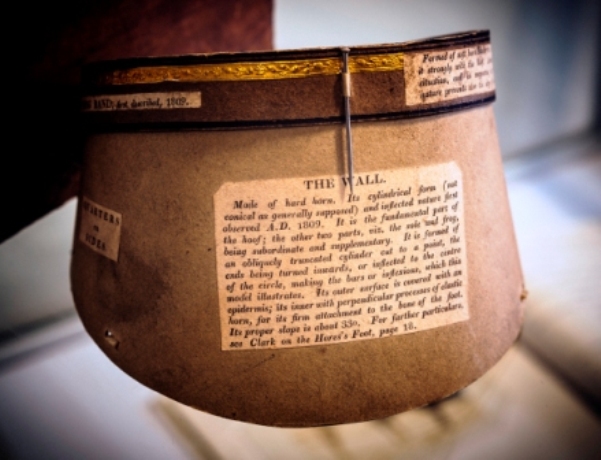
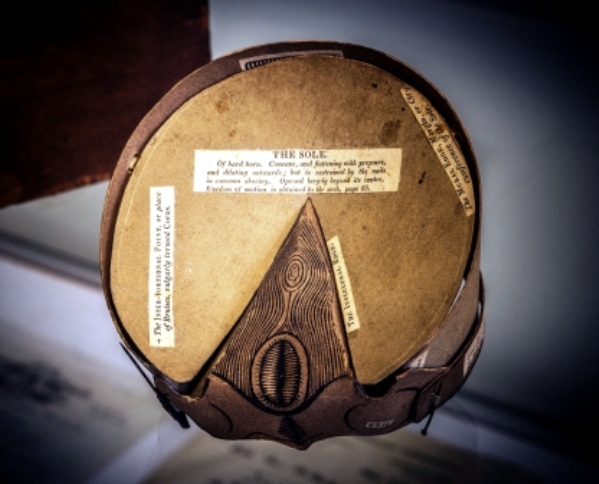
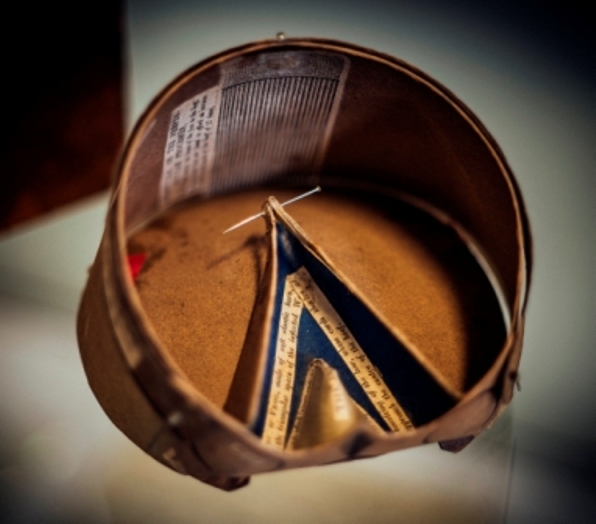
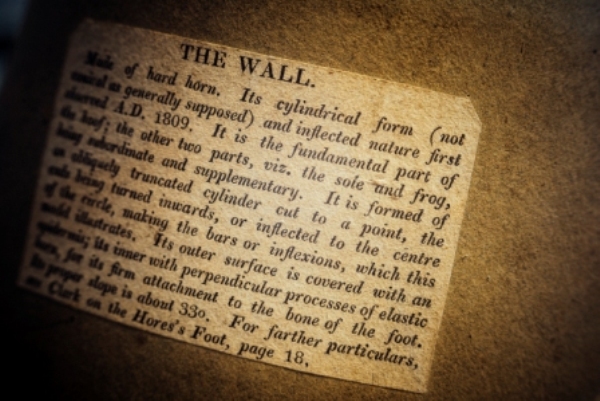
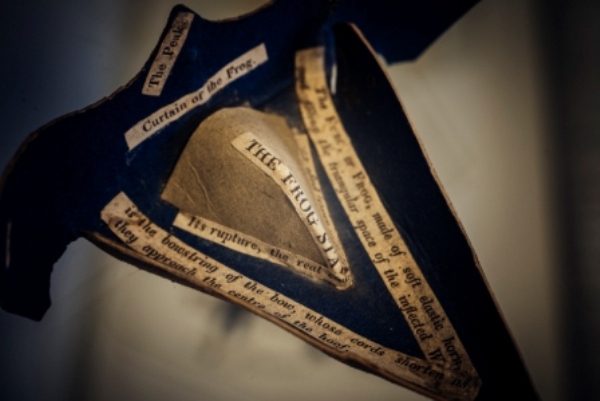
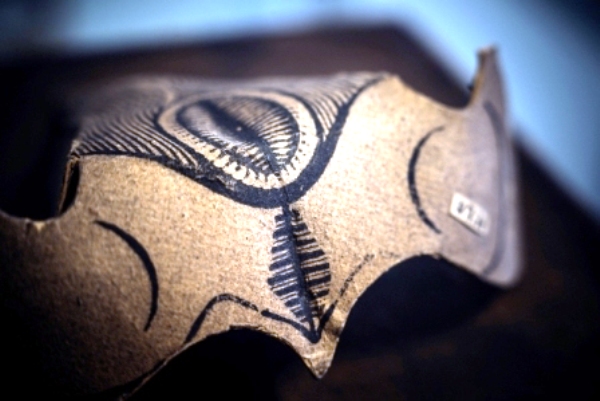
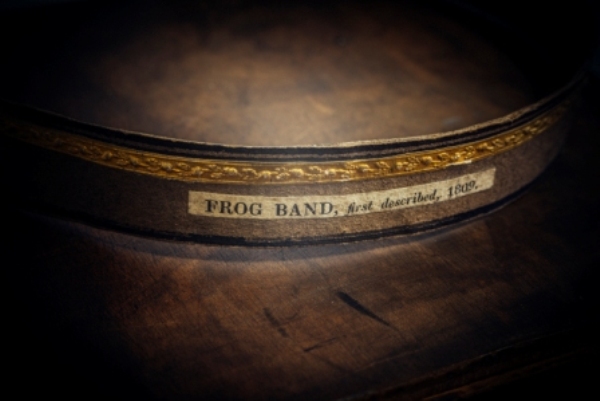
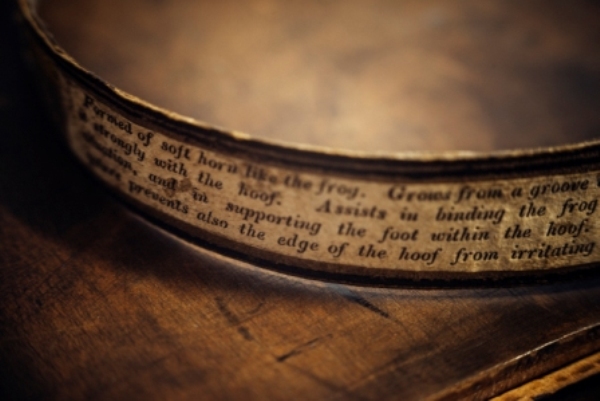
We are an RCVS Knowledge initiative, for the preservation and promotion of the historical collections of the Royal College of Veterinary Surgeons, made possible with the support of The Alborada Trust.
The Alborada Trust is a charitable trust founded in 2001. Its aims are the funding of medical and veterinary causes, research and education – and the relief of poverty and human and animal suffering, sickness and ill-health. Charity Registration No 1091660
Royal College of Veterinary Surgeons Trust (trading as RCVS Knowledge) is a registered Charity No. 230886. Registered as a Company limited by guarantee in England and Wales No. 598443.
Registered Office:
First Floor, 10 Queen Street Place, London EC4R 1BE
Correspondence Address:
RCVS Knowledge, 3 Waterhouse Square, 138-142 Holborn, London. EC1N 2SW
020 7202 0721
This site uses cookies. By continuing to browse the site, you are agreeing to our use of cookies. See our cookie declaration
Accept settingsHide notification onlySettingsWe may request cookies to be set on your device. We use cookies to let us know when you visit our websites, how you interact with us, to enrich your user experience, and to customize your relationship with our website.
Click on the different category headings to find out more. You can also change some of your preferences. Note that blocking some types of cookies may impact your experience on our websites and the services we are able to offer.
These cookies are strictly necessary to provide you with services available through our website and to use some of its features.
Because these cookies are strictly necessary to deliver the website, refuseing them will have impact how our site functions. You always can block or delete cookies by changing your browser settings and force blocking all cookies on this website. But this will always prompt you to accept/refuse cookies when revisiting our site.
We fully respect if you want to refuse cookies but to avoid asking you again and again kindly allow us to store a cookie for that. You are free to opt out any time or opt in for other cookies to get a better experience. If you refuse cookies we will remove all set cookies in our domain.
We provide you with a list of stored cookies on your computer in our domain so you can check what we stored. Due to security reasons we are not able to show or modify cookies from other domains. You can check these in your browser security settings.
We also use different external services like Google Webfonts, Google Maps, and external Video providers. Since these providers may collect personal data like your IP address we allow you to block them here. Please be aware that this might heavily reduce the functionality and appearance of our site. Changes will take effect once you reload the page.
Google Webfont Settings:
Google Map Settings:
Vimeo and Youtube video embeds:
